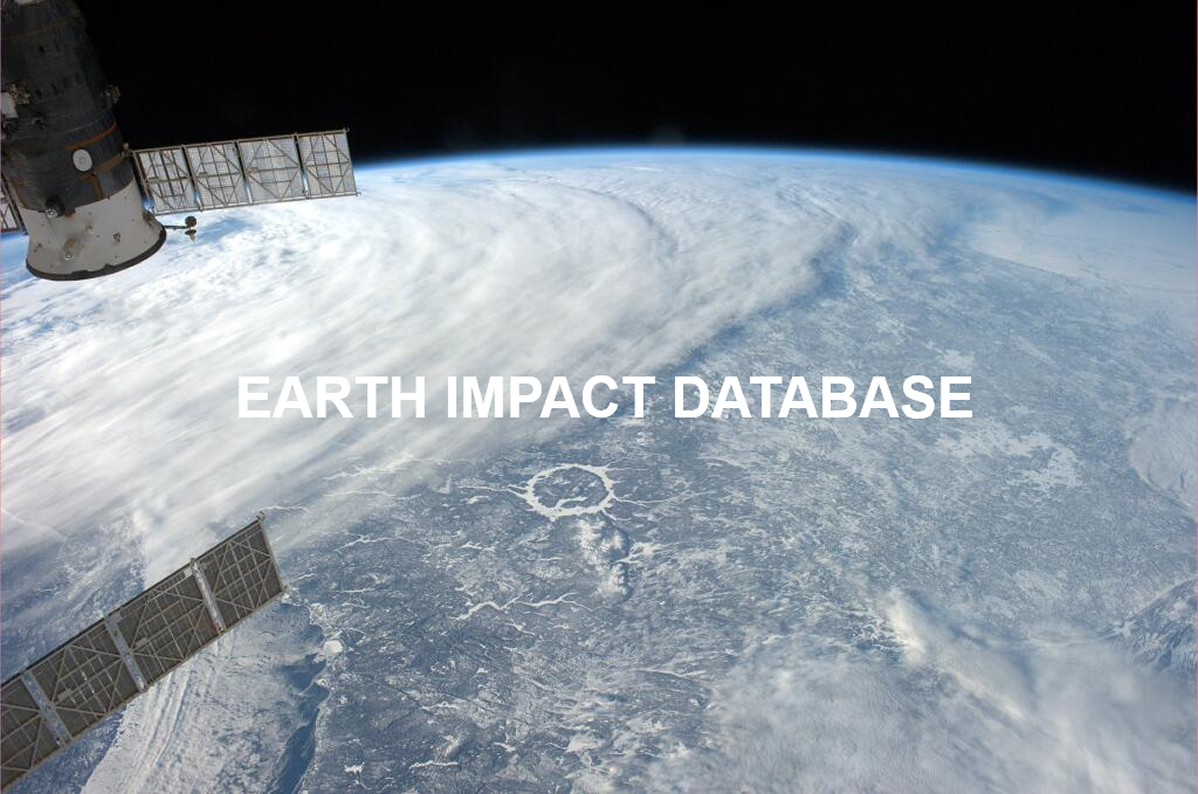Santa Marta
| Crater Name | Location | Latitude | Longitude | Diameter (km) | Age (Ma) | Exposed | Drilled | Target Rock** | Bolide Type*** |
|---|---|---|---|---|---|---|---|---|---|
| Santa Marta | Brazil | S 10°10' | W 45° 15' | 10 | 66-100 | Y | N | M | - |
References |
Baratoux D. and Melosh H. J. 2003. The formation of shatter cones by shock wave interference during impacting. Earth and Planetary Science Letters 216:43–54. |
Campos J. E. G. and Dardenne M. A. 1997a. Estratigrafia e sedimentação da bacia Sanfranciscana: Uma Revisão. Revista Brasileira Geociências 27:269–282. |
Campos J. E. G. and Dardenne M. A. 1997b. Origem e evolução tectônica da Bacia Sanfranciscana. Revista Brasileira de Geociências 27:283–294. |
Crósta A. P. 2012. Estruturas de impacto e astroblemas brasileiros. In Geologia do Brasil, edited by Hasui Y., Carneiro C. D. R., de Almeida F. F. M., and Bartorelli A. São Paulo: Ed. Becca. pp. 673–708. |
Crósta A. P. and Vasconcelos M. A. R. 2013. Update on the current knowledge of the Brazilian impact craters (abstract #1318). 44th Lunar and Planetary Science Conference. CD-ROM. |
De Oliveira, G. J. G., Vasconcelos, M. A. R., Crósta, A. P., Reimold, W. U., Góes, A. M., and Kowitz, A. 2014. Shatter cones and planar deformation features confirm Santa Marta in Piauí State, Brazil, as an impact structure. Meteoritics & Planetary Science, 49(10), 1915–1928. doi:10.1111/maps.12368 |
French B. M. and Koeberl C. 2010. The convincing identification of terrestrial meteorite impact structures: What works, what doesn't, and why. Earth-Science Reviews 98:123–170. |
Góes A. M. and Feijó F. J. 1994. Bacia do Parnaíba. Boletim de Geociências da Petrobras 8:57–67. |
Grieve R. A. F. and Pilkington M. 1996. The signature of terrestrial impacts. Journal of Australian Geology and Geophysics 16:399–420. |
Huber M. S., Ferrière L., Losiak A., and Koeberl C. 2011. ANIE: A mathematical algorithm for automated indexing of planar deformation features in quartz grains. Meteoritics & Planetary Science 46:1418–1424. |
Huffman A. R. and Reimold W. U. 1996. Experimental constraints on shock-induced microstructures in naturally deformed silicates. Tectonophysics 256:165–217. |
Kenkmann T., Vasconcelos M. A. R., Crósta A. P., and Reimold W. U. 2011. The complex impact structure Serra da Cangalha, Tocantins State, Brazil. Meteoritics & Planetary Science 46:875–889. |
Lima M. A. E. and Leite F. J. 1978. Estudo global dos recursos minerais da Bacia Sedimentar do Parnaíba. Companhia de Pesquisa de Recursos Minerais: Superintendência Regional de Recife 2:50–115. |
Master S. and Heymann S. 2000. A possible new impact structure near Gilbués, in Piauí Province, Northeastern Brazil. Meteoritics & Planetary Science 35(5 Suppl.):A105. |
Maziviero M. V., Vasconcelos M. A. R., Crósta A. P., Góes A. M., Reimold W. U., and Carneiro C. C. 2013. Geology and impact features of Riachão structure, northern Brazil. Meteoritics & Planetary Science 48(10):2044–2058. |
Pilkington M. and Grieve R. A. F. 1992. The geophysical signature of terrestrial impact craters. Reviews of Geophysics 30:161–181. |
Poelchau M. F. and Kenkmann T. 2011. Feather features: A low-shock-pressure indicator in quartz. Journal of Geophysical Research, Solid Earth 116:B02201. doi:10.1029/2010JB007803. |
Reimold W. U., Ferrière L., Deutsch A., and Koeberl C. 2014. Impact controversies: Impact recognition criteria and related issues (Editorial). Meteoritics & Planetary Science 49:9. |
Romano R. and Crósta A. P. 2004. Brazilian impact structures: A review (abstract #1546). 35th Lunar and Planetary Science Conference. CD-ROM. |
Stöffler D. and Langenhorst F. 1994. Shock metamorphism of quartz in nature and experiment: I. Basic observation and theory. Meteoritics 29:155–181. |
Telford W. M., Geldart L. P., Sheriff R. E., and Keys D. A. 1991. Applied geophysics. New York: Cambridge University Press. 860 p |
Vasconcelos M. A. R., Crósta A. P., and Molina E. C. 2010. Geophysical characteristics of four possible impact structures in the Parnaiba Basin, Brazil: Comparisons and implications. In Large meteorite impacts and planetary evolution IV, edited by Gibson R. L. and Reimold W. U. GSA Special Paper 465. Boulder, Colorado: Geological Society of America. pp. 201–218. |
Vasconcelos M. A. R., Crósta A. P., Reimold W. U., Góes A. M., Kenkmann T., and Poelchau M. 2013. The Serra da Cangalha impact structure, Brazil: Geological, stratigraphic and petrographic aspects of a recently confirmed impact structure. Journal of South American Earth Sciences 45:316–330. |
Velázquez V. F., Riccomini C., Azevedo-Sobrinho J. M., Pletsch M. A. J. S., Sallun A. E. M., Sallun-Filho W., and Hachiro J. 2013. Evidence of shock metamorphism effects in allochthonous breccia deposits from the Colônia crater, São Paulo, Brazil. International Journal of Geosciences 4:274–282. |
Wieland F., Reimold W. U., and Gibson R. L. 2006. New observations on shatter cones in the Vredefort impact structure, South Africa, and evaluation of current hypothesis for shatter cone formation. Meteoritics & Planetary Science 47:1659–1670. |
| * pre-1977 K-Ar, Ar-Ar and Rb-Sr ages recalculated using the decay constants of Steiger and Jager (1977) Ages in millions of years (Ma) before present. ** Abbreviations: C - Crystalline Target; C-Ms - Metasedimentary Target; M - Mixed Target (i.e.sedimentary strata overlying crystalline basement); S - sedimentary target (i.e. no crystalline rocks affected by the impact event). From Osinski. G. R., Spray J. G., and Grieve R. A. F. 2007. Impact melting in sedimentary target rocks: A synthesis. In The Sedimentary Record of Meteorite Impacts, Geological Society of America Special Paper. Editors: Evans K. Horton W., King D., Morrow J., and Warme J. Geological Society of America: Boulder, in press. ***From Koeberl,C. Identification of meteoritic components in impactites. 1998, Koeberl, C. The Geochemistry and Cosmochemistry of Impacts. 2007 and PASSC Files. (IAB, IIIAB, IIIB, IIID - Iron Meteorite) |
